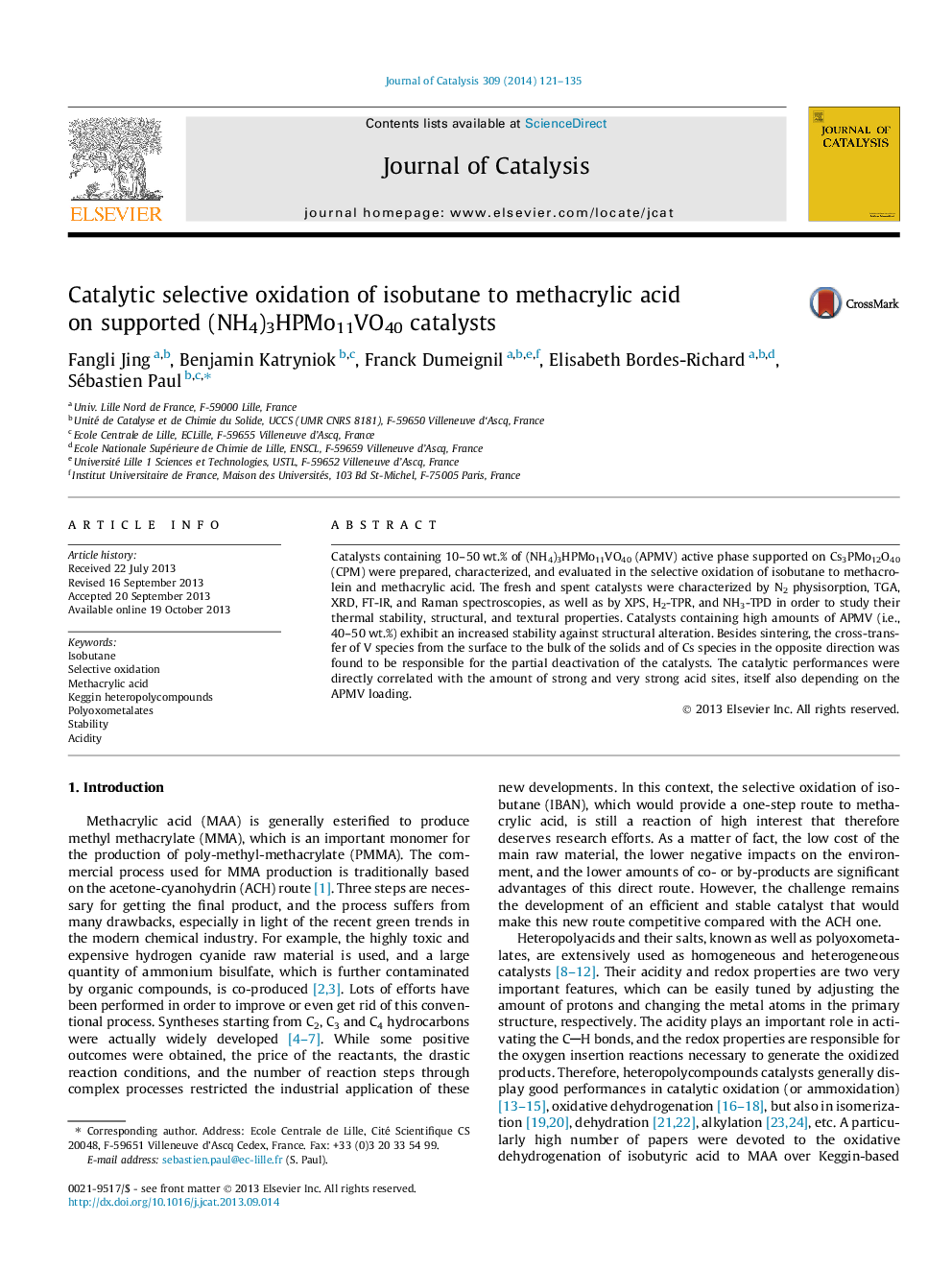| Article ID | Journal | Published Year | Pages | File Type |
|---|---|---|---|---|
| 61103 | Journal of Catalysis | 2014 | 15 Pages |
•40 wt.% loading of (NH4)3HPMo11VO40 on Cs3PMo12O40 leads to the better thermal stability.•Cross-transfer of V and Cs species was found to be responsible for the partial deactivation of the catalysts.•Selectivity in methacrylic acid and methacrolein increased with the amount of strong and very strong acidic sites.•Relationship between surface acid density and the catalytic activity was established.
Catalysts containing 10–50 wt.% of (NH4)3HPMo11VO40 (APMV) active phase supported on Cs3PMo12O40 (CPM) were prepared, characterized, and evaluated in the selective oxidation of isobutane to methacrolein and methacrylic acid. The fresh and spent catalysts were characterized by N2 physisorption, TGA, XRD, FT-IR, and Raman spectroscopies, as well as by XPS, H2-TPR, and NH3-TPD in order to study their thermal stability, structural, and textural properties. Catalysts containing high amounts of APMV (i.e., 40–50 wt.%) exhibit an increased stability against structural alteration. Besides sintering, the cross-transfer of V species from the surface to the bulk of the solids and of Cs species in the opposite direction was found to be responsible for the partial deactivation of the catalysts. The catalytic performances were directly correlated with the amount of strong and very strong acid sites, itself also depending on the APMV loading.
Graphical abstractFigure optionsDownload full-size imageDownload high-quality image (63 K)Download as PowerPoint slide
